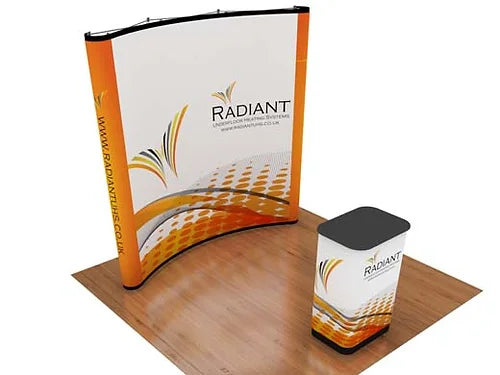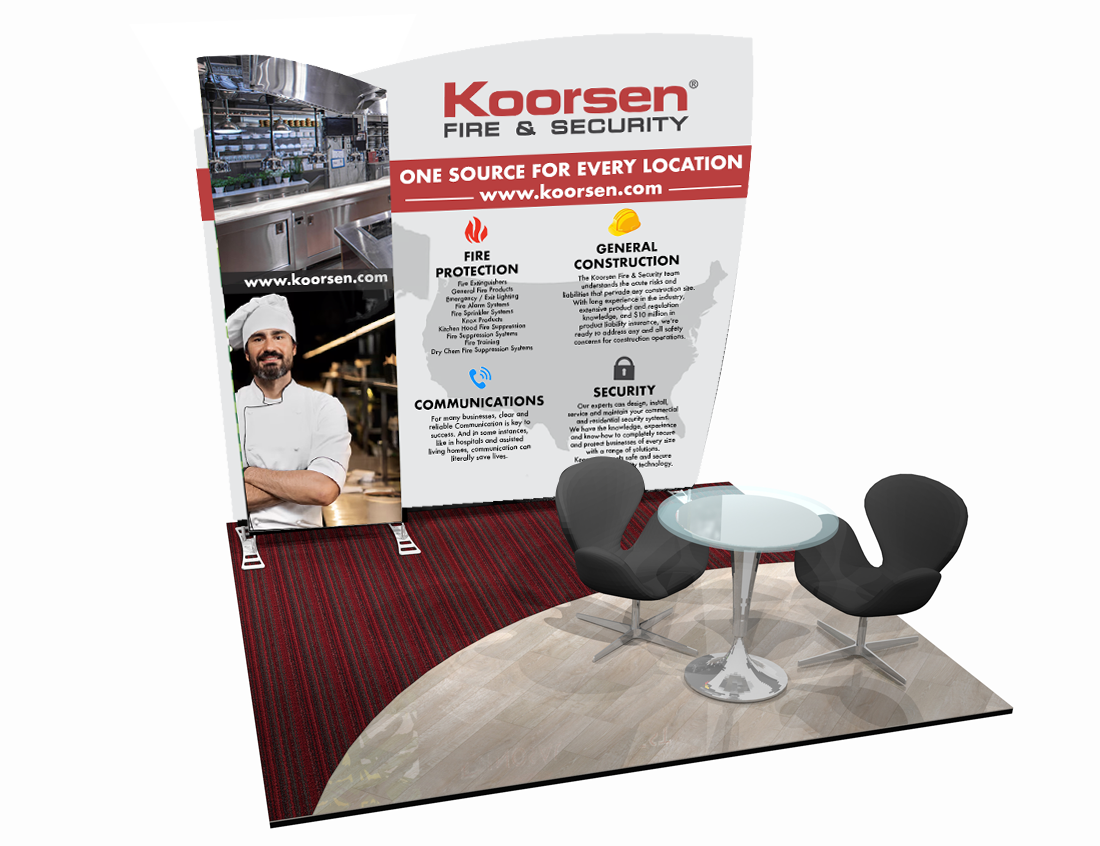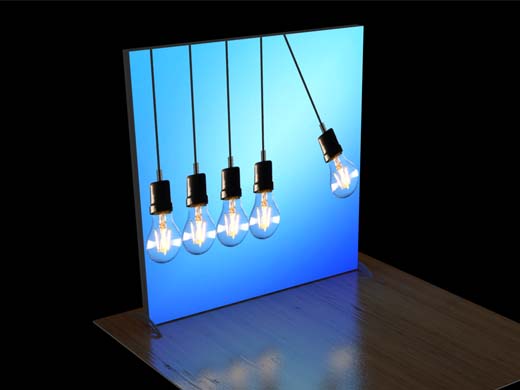A KEY component of trade shows, is the vitality and enthusiasm of your team, where they can either make or break your triumph. Having a well-prepared and skilled team is not merely an advantage; it sets you apart from the competition. The expertise and abilities that your team gains through targeted training are priceless. Effective team training holds the potential to significantly boost your trade show outcomes. Whether you are gearing up for your inaugural trade show or seeking to revitalize your current strategy, these valuable insights will empower your team to stand out on the exhibition floor. They will deliver not only information but also unforgettable experiences that will resonate with attendees.
Ten Key Advantages of a Well-Trained Team
-
ENHANCED PROFESSIONALISM: A well-trained team projects professionalism and competence, creating a positive impression of your brand. This helps in establishing trust and credibility among trade show attendees, which is crucial for building long-term relationships.
-
INCREASED LEAD GENERATION: Team members who are adept at engaging attendees, explaining product benefits clearly, and efficiently handling queries are more likely to capture and convert leads. Effective communication skills are essential for maximizing the number of leads collected during a trade show.
-
IMPROVED SALES CONVERSIONS: Training helps your team not only in gathering leads but also in effectively following up post-event. This includes knowing how to nurture leads through the sales funnel, resulting in higher conversion rates and a better return on investment from the trade show.
-
CONSISTENT BRAND MESSAGING: A well-prepared team will have a unified understanding of the company's key messages and brand values. This consistency ensures that all team members convey the same messages to visitors, reinforcing the brand's identity and core messages.
-
BETTER ENGAGEMENT WITH ATTENDEES: Training in customer engagement techniques, including active listening and empathy, enables team members to connect more effectively with booth visitors. This leads to more meaningful interactions, which are likely to leave a lasting impression and foster loyalty.
-
ENHANCED PROBLEM-SOLVING SKILLS: Trade shows often present unexpected challenges and questions from attendees. A trained team will be better equipped to handle these situations gracefully, providing solutions on the spot and demonstrating the company's commitment to customer service.
-
INCREASED EFFICIENCY AND EFFECTIVENESS: Training can also include logistical aspects of managing a trade show booth, such as setup, breakdown, and the efficient use of booth technology and materials. A well-trained team is more adept at handling these elements, which improves the overall smooth running of the event.
-
STRESS REDUCTION: Knowing what to expect and how to handle various situations reduces stress for team members and management alike. This allows the team to focus more on engaging with attendees rather than dealing with internal confusion or uncertainties.
-
EMPOWERMENT AND MOTIVATION: Training empowers employees by giving them the tools and confidence they need to succeed. This not only improves their performance at the trade show but also boosts their overall job satisfaction and motivation.
-
COMPETITIVE ADVANTAGE: Ultimately, a well-trained team can provide a significant competitive edge. In the competitive environment of a trade show, having a team that is knowledgeable, engaging, and professional can make your booth and brand stand out from the crowd.
Understanding Trade Show Goals and Objectives
Understanding the specific goals of a trade show is crucial because it directly influences the training needs of the team that will represent your brand at the event. Each trade show might have different objectives, such as launching a new product, generating leads, increasing brand awareness, or fostering industry partnerships. The training provided should equip team members with the skills and knowledge tailored to meet these specific goals. For example, if the goal is lead generation, the training should emphasize lead capture techniques and engaging potential clients effectively.
The way your team communicates should reflect the primary objectives of participating in the trade show. If the goal is to launch a new product, training will focus on product knowledge, the ability to demonstrate the product effectively, and answering technical questions. Conversely, if the goal is to enhance brand visibility, the focus might be on storytelling techniques that highlight the brand's history and values.
Understanding the show's goals helps in setting the right behavioral expectations for the team. For instance, if the objective is to network and build industry relationships, training might include etiquette, active listening skills, and ways to foster meaningful conversations. This ensures that the team behaves in a manner that not only reflects well on your company but also aligns with the strategic objectives of the event.
When goals are clearly defined, it becomes easier to assign roles and responsibilities that support these objectives. Training can then be customized to ensure each team member is fully prepared for their specific roles, whether it be engaging with booth visitors, handling demonstrations, or conducting on-site sales.
Training needs to include elements of crisis management and adaptability, especially if the trade show goals involve high-stakes presentations or unveiling significant products. Teams need to be prepared to handle unexpected situations that could impact the company's objectives, such as technical difficulties during a presentation or handling a surge in booth traffic.
Training should also cover how to effectively follow up post-show to meet goals related to sales or long-term relationship building. This includes training on CRM software, personalized follow-up strategies, and methods for measuring success against the trade show objectives.
By understanding the goals of the trade show, the training can be strategically designed to equip the team with the necessary tools and skills to meet or exceed these objectives, thus maximizing the return on investment from the event.
Areas of Focus for Team Training
Developing Product Knowledge
- Comprehensive product training: Ensuring every team member is an expert on the products or services being presented
- Role-playing: Practice scenarios to help team members perfect their product pitch and handle potential questions
Customer Interaction Skills
- Engagement techniques: Training on how to engage attendees, capture their interest, and effectively communicate key messages
- Handling objections: Teach strategies for addressing common concerns or barriers that visitors might have
Booth Etiquette and Presentation Skills
- Professional behavior: Guidelines on how to represent the brand professionally, including dress code, punctuality, and booth upkeep
- Dynamic presentations: Tips on giving engaging and informative presentations or demos at the booth
Using Technology Effectively
- Digital tools training: How to use any digital displays, apps, or interactive tools that are part of the booth
- Social media integration: Training on how to incorporate social media effectively to draw more visitors
Teamwork and Coordination
- Communication: Establishing effective lines of communication among team members during the event
- Backup plans: Preparing the team for unexpected situations or questions and how to handle them smoothly
Post-Show Follow-Up
- Training for follow-up: How to effectively follow up with leads and contacts post-show to maximize trade show investment
- Review and feedback: Importance of gathering and analyzing feedback from the team to improve future performances
Aligning team training with the specific goals of a trade show is essential for ensuring that each team member is fully equipped to meet your business objectives. Whether it’s mastering product demonstrations, enhancing lead generation skills, or engaging effectively with potential partners, the right training prepares your team not only to face the challenges of the trade show environment but to excel within it. By focusing training efforts on goal-specific skills, communication strategies, and behavioral professionalism, you set the stage for a successful exhibition.
REMEMBER, A WELL-PREPARED TEAM IS YOUR BEST ASSET (OUTSIDE OF YOUR BOOTH) IN MAXIMIZING THE RETURN ON YOUR TRADE SHOW INVESTMENT, MAKING EVERY INTERACTION COUNT TOWARDS ACHIEVING YOUR DESIRED OUTCOMES.











